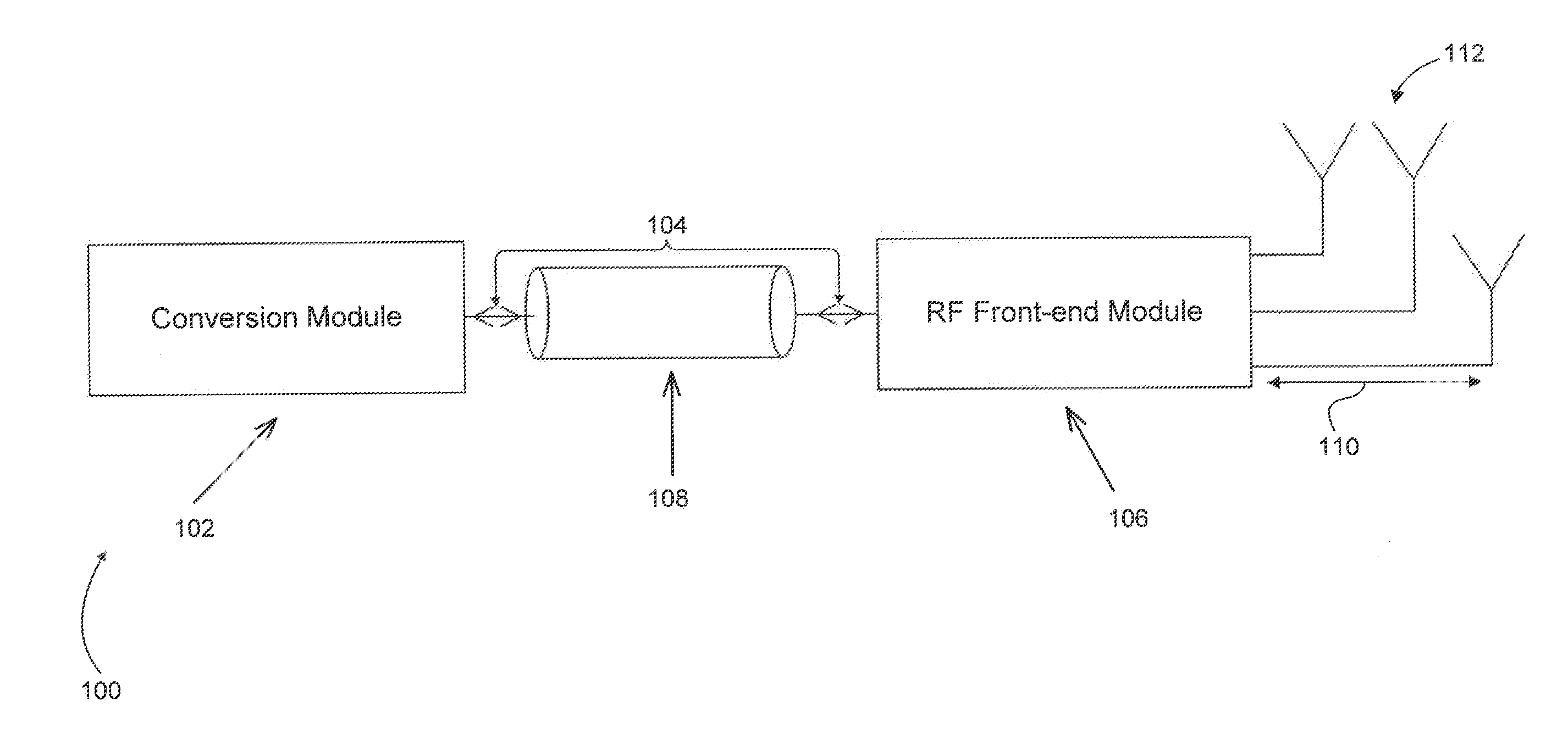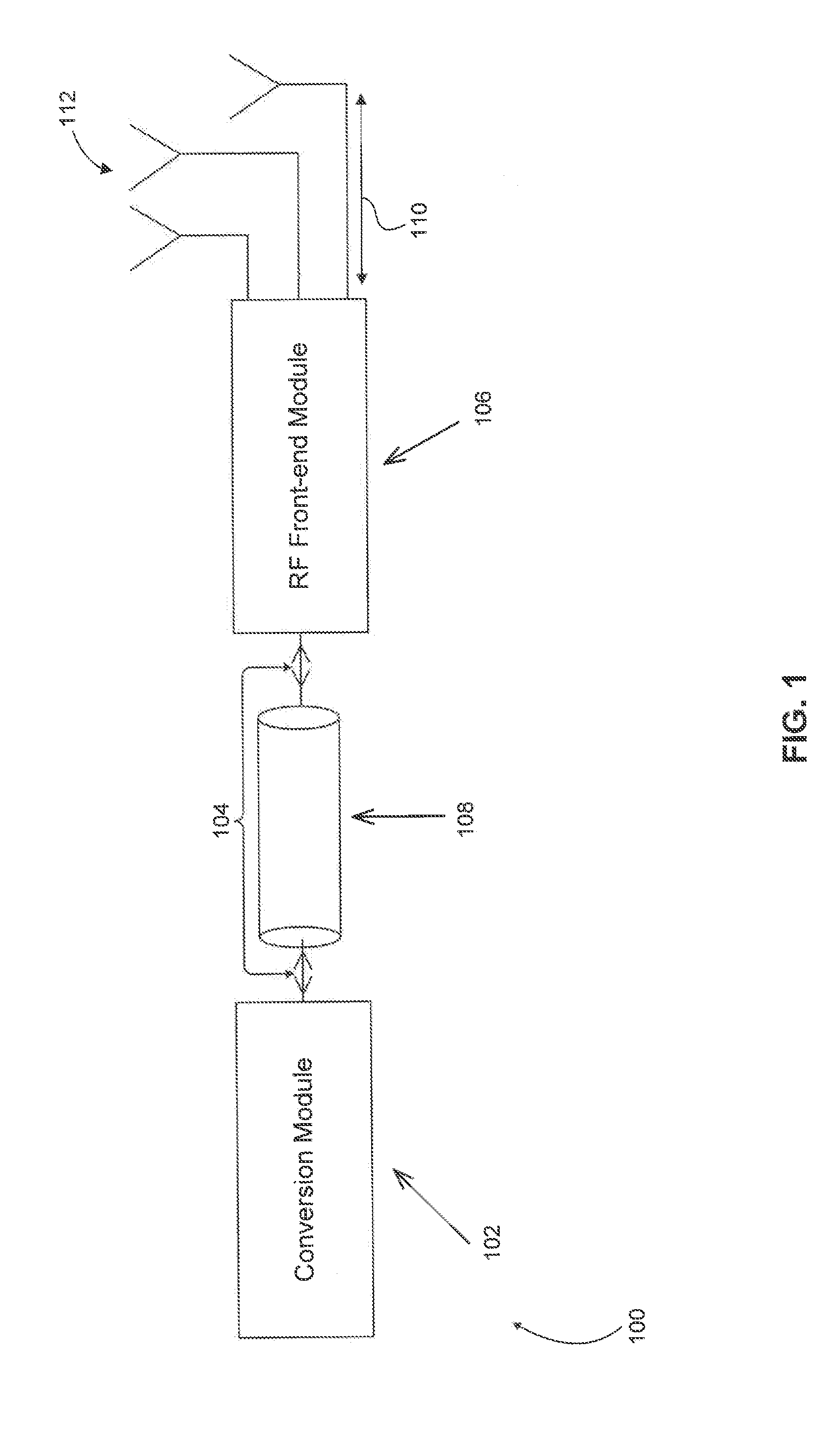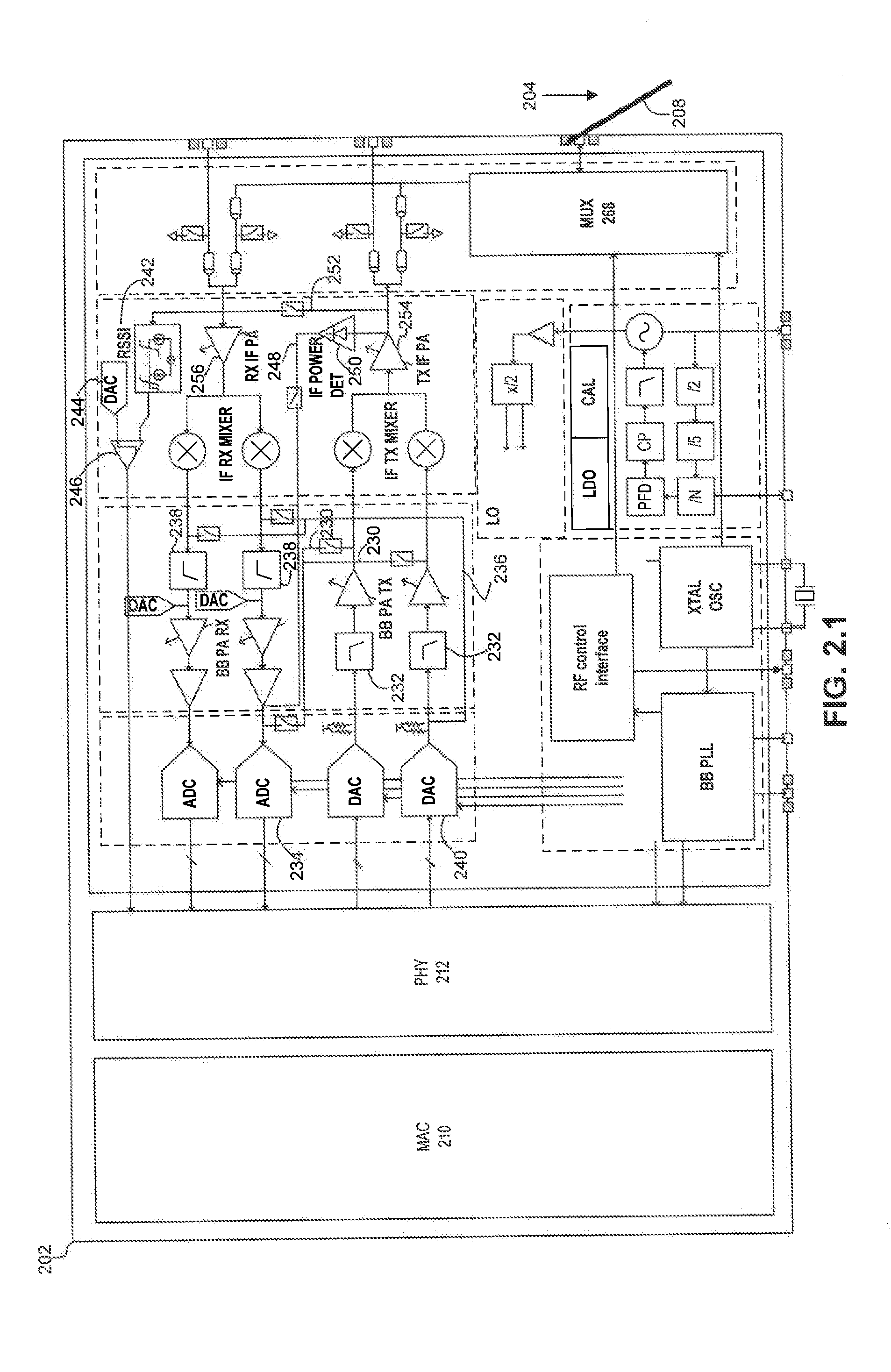Split Microwave Backhaul Transceiver Architecture with Coaxial Interconnect
a coaxial interconnection and split microwave technology, applied in the direction of transmitter monitoring, receiver monitoring, transmission monitoring, etc., can solve the problems of inability to properly radiate the antenna, inability to achieve the effect of reducing the cost of coaxial cable routing, and increasing the problem of conventional coaxial cable routing
- Summary
- Abstract
- Description
- Claims
- Application Information
AI Technical Summary
Benefits of technology
Problems solved by technology
Method used
Image
Examples
Embodiment Construction
[0016]In computing devices incorporating conventional communication technologies, a coaxial cable may be used to connect a radio device to an antenna. The antenna and the radio device may be located in different areas of the computing device. Typically, a coaxial cable connects the radio device to the antenna. The cable is routed from the radio device, which may be located on a printed circuit board (PCB), through the casing of the computing device and into the periphery of the device. The reason for this routing technique is that the antenna is usually located in the periphery of the computing device so that the antenna can radiate properly, which it would not have been able to do if it were located on the PCB along with the radio device. However, when the communication system operates at a commonly utilized frequency of 60 GHz, the system does not function properly due to significant losses and deterioration of the signal. Thus, there is a need for an alternative, which allows for...
PUM
 Login to View More
Login to View More Abstract
Description
Claims
Application Information
 Login to View More
Login to View More - R&D
- Intellectual Property
- Life Sciences
- Materials
- Tech Scout
- Unparalleled Data Quality
- Higher Quality Content
- 60% Fewer Hallucinations
Browse by: Latest US Patents, China's latest patents, Technical Efficacy Thesaurus, Application Domain, Technology Topic, Popular Technical Reports.
© 2025 PatSnap. All rights reserved.Legal|Privacy policy|Modern Slavery Act Transparency Statement|Sitemap|About US| Contact US: help@patsnap.com



